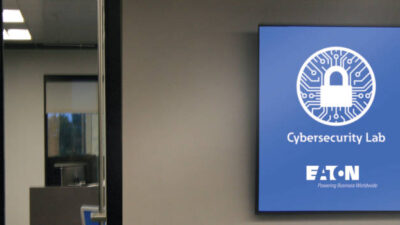A well-planned virtual buy-off process for factory acceptance tests (FATs) can benefit all involved parties.

Prior to 2020, many industries were exploring non-traditional work practices including work-from-home schedules and connecting virtually to remotely-located employees. The COVID-19 pandemic heightened the acceptance of these practices for many companies. Creating a virtual buy-off plan is an extension of these evolving work practices.
The system buy-off is a critical stage of our integration service that allows our customers to see the automation and gauge performance. One of the most important activities is the demonstration of the process that was designed and achievement of successful metrics. It also typically includes inspection tasks of the system components, everything from wiring in the control panel to the mounting of a tool on the robot. There are many benefits of a virtual factory acceptance test (FAT), from savings in cost and time to greater accessibility for stakeholders.
Benefits of virtual FAT systems
The ability to conduct a virtual system buy-off has many potential benefits. The most obvious impact is removing the need for people to travel from different areas and potential concerns with COVID and other health factors. Even limiting the travel to necessary individuals has merit. But there are additional advantages that companies are seeing. Eliminating travel requirements saves money but also time. Often we see an increase in stakeholder participation because of the reduced time commitment from days to hours. Another payoff is the ability to schedule quicker follow up consultations or even to bring someone new into the discussion just by sending a meeting invite.
One benefit is the ability to document the buy-off process. Almost all virtual meeting environments allow for recording to a video file that can be shared to the group. This provides a reference to the various discussions and decisions that are made and documents automation performance. It is also a way to share progress with other stakeholders that are not part of the buy-off process.
When it comes to conducting virtual system buy-offs, there needs to be a general plan. The plan is reviewed ahead of the scheduled date to identify any unique needs for a particular system or customer. Multiple cameras are utilized to provide the ability to see an overall system running or more close up views of tool functions. There is a camera specifically set to the human-machine interface (HMI) screen so users can demonstrate operator tasks and also witness how faults and automation conditions are represented. We have also found value in having a camera available to “rove” around the system and reposition as desired by the audience in the meeting.
Of course, there can be challenges with a virtual environment that should be addressed. Any time we incorporate more technology into our plan, we need to be prepared for roadblocks including connectivity issues, firewalls and even the human “disengagement” factor when attending a meeting online. In order to combat this, consider using some guidelines for virtual buy-off activities.
There is a short logistics discussion conducted ahead of the buy-off event to review how everything will work and test access and screens. A detailed agenda is created that includes all buy-off tasks to keep things running and removes idle time. Most importantly, keep a real-time checklist of tasks and list of action items with assigned owners that can be viewed by the participants and keep everyone accountable and engaged.
- Create a general virtual commissioning plan well ahead of time and identify any unique needs for this system or customer
- Plan to use multiple cameras and angles to provide a variety of views so the remote participants to see the necessary processes and information
- Plan one camera for roaming shots
- Have a backup plan for potential connectivity issues, including firewalls
- Plan frequent breaks to keep the human “disengagement” factor to a minimum
- Carefully plan out the agenda and logistics of the meeting
- Rehearse to uncover potential access and camera-angle difficulties
- Set up a real-time list of action items with assigned owners that can be viewed by all participants.
A well-planned virtual buy-off process can benefit all involved parties. From time and cost savings to accessibility and better documentation, a virtual factory acceptance has many advantages and will remain a good option going forward, when COVID-19 is no longer a concern.
This article originally appeared on Applied Manufacturing Technologies’ (AMT) website. AMT is a CFE Media content partner. Edited by Chris Vavra, web content manager, Control Engineering, CFE Media and Technology, [email protected].



